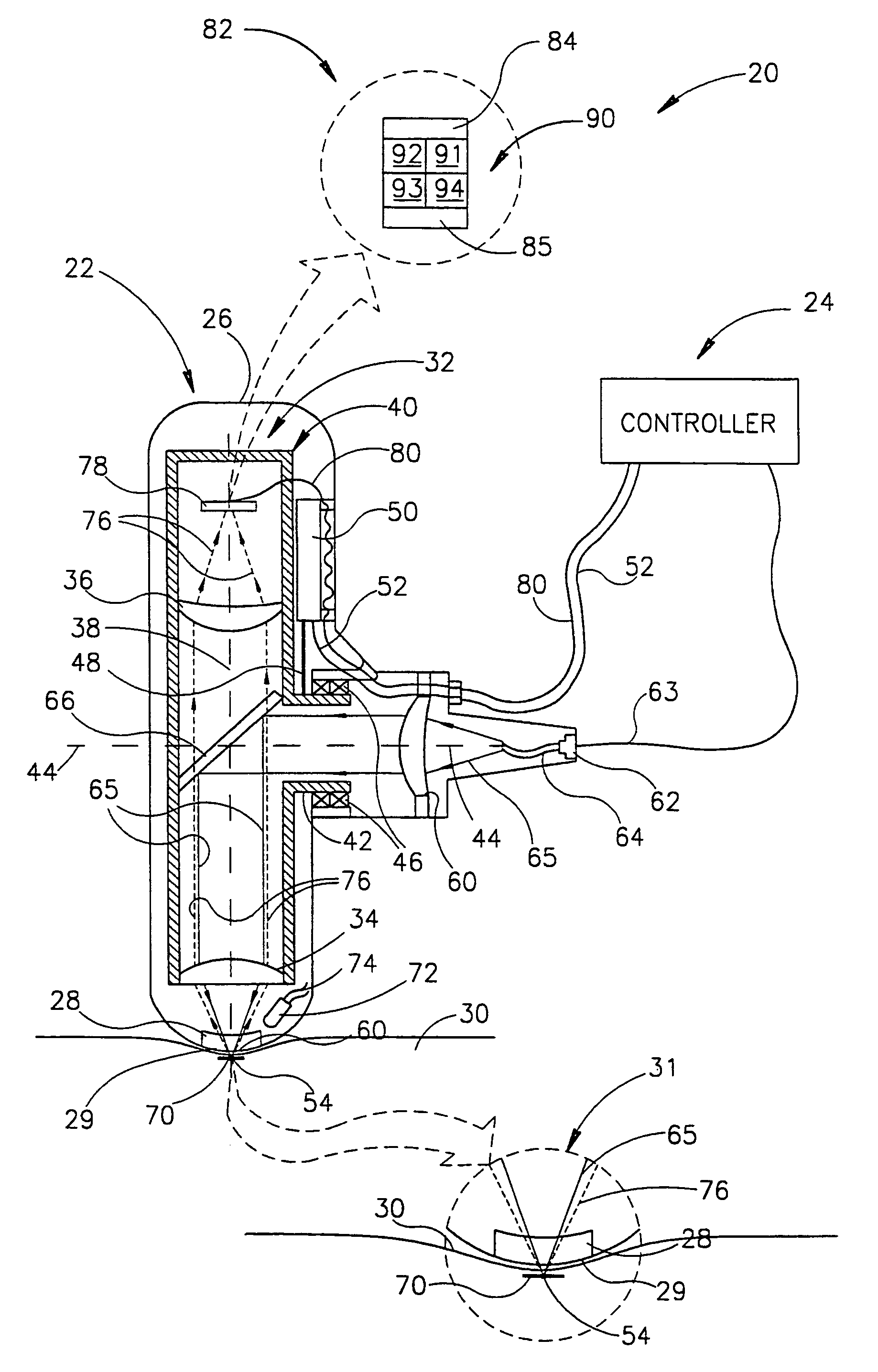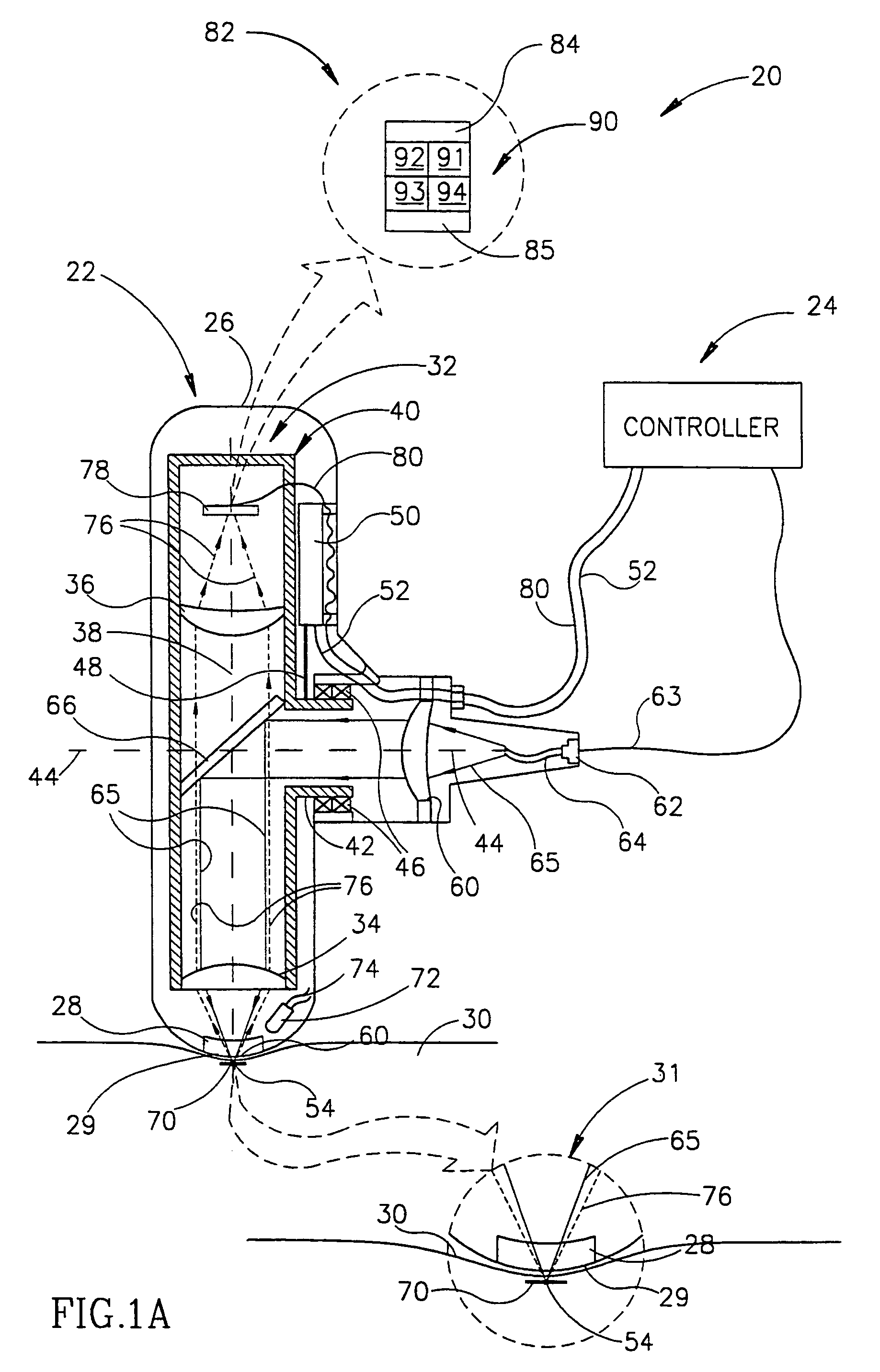Laser for skin treatment
a laser and skin technology, applied in the field of laser devices, can solve the problems of wasting the majority of the laser energy of the depilator, the system cannot solve this problem satisfactorily, and the tissue is contaminated with unwanted and unneeded energy, so as to achieve the effect of reducing the amount of laser energy inciden
- Summary
- Abstract
- Description
- Claims
- Application Information
AI Technical Summary
Benefits of technology
Problems solved by technology
Method used
Image
Examples
Embodiment Construction
[0062]FIG. 1A schematically shows a laser system 20, in accordance with a preferred embodiment of the present invention, comprising a hand unit 22 and a controller 24. Hand unit 22 is shown in a cutaway cross-section view. It should be noted that whereas controller 24 is shown separate from hand unit 22, in most preferred embodiments, controller 24 is mounted on or inside hand unit 22. In addition, energy to power hand unit 22 may come from an external power supply or preferably from an appropriate portable power supply mounted inside hand unit 22.
[0063]Hand unit 20 preferably comprises a housing 26 having a window 28. Window 28 has a surface 29 that is pressed to the skin 30 of a patient. Surface 29 and skin 30 are shown separated by a small distance for clarity of presentation and are shown magnified in an insert 31. Hand unit 20 comprises a microscope 32 mounted inside housing 26. Microscope 32 comprises an objective lens 34, an ocular lens 36 and an optic axis 38. Objective lens...
PUM
 Login to View More
Login to View More Abstract
Description
Claims
Application Information
 Login to View More
Login to View More - R&D
- Intellectual Property
- Life Sciences
- Materials
- Tech Scout
- Unparalleled Data Quality
- Higher Quality Content
- 60% Fewer Hallucinations
Browse by: Latest US Patents, China's latest patents, Technical Efficacy Thesaurus, Application Domain, Technology Topic, Popular Technical Reports.
© 2025 PatSnap. All rights reserved.Legal|Privacy policy|Modern Slavery Act Transparency Statement|Sitemap|About US| Contact US: help@patsnap.com



